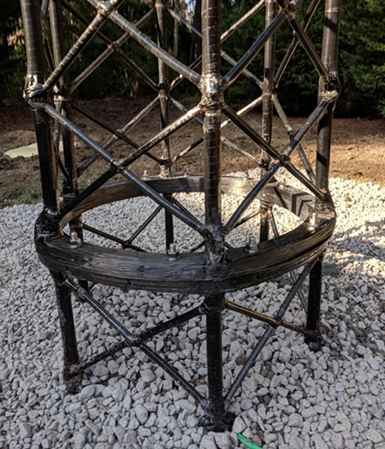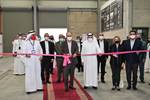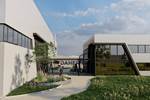IsoTruss receives EPA funding for R&D in fiber-reinforced concrete foundations
Eco-friendly concept increases resiliency and energy absorption, decreases installation time and costs for use in telecommunication tower infrastructure.

Photo Credit: IsoTruss Inc.
(Springville, Utah, U.S.), an engineering, design and manufacturing services provider, has earned a $100,000 funding award from the U.S. Environmental Protection Agency (EPA)’s Small Business Innovation Research (SBIR) Program. The Phase 1 award will be applied towards research and development (R&D) of a fiber-reinforced concrete foundation for the company’s carbon fiber lattice cell telecommunication towers— 12 times stronger than steel and offering 70% reduction in carbon emissions — to increase resiliency to natural disasters. Future entry into other applications such as roads, bridges and buildings is expected.
“Infrastructure must become safer, longer lasting and more sustainable,” notes Nathan D. Rich, IsoTruss CEO. “With this grant from the EPA, we can move forward in developing an eco-friendly composite-reinforced concrete foundation aimed at improving resiliency while decreasing construction time and costs compared to traditional solutions.”
The proposed IsoTruss-reinforced concrete foundation aims to improve the resiliency over steel-reinforced concrete by better combining the axial and shear strength of the reinforcement, providing more energy absorption and allowing IsoTruss-reinforced concrete to be rated to withstand higher loading conditions.

IsoTruss telecommunication tower base.
Moreover, the fiber-reinforced concrete indicates advantages in terms of decreased installation costs and time. IsoTruss successfully tested the concept with a foam foundation pilot deployment for a commercial customer; per the test, installation costs were reduced by 60% compared to a typical tower foundation.
“This solution will be timely for telecom tower owners with the transition to 5G networks in the U.S. that will increase tower density by approximately 10 times, leading to a total addressable market of $75 billion,” adds Cromwell Wong, COO, IsoTruss Inc.
The company was one of 30 small U.S. businesses to receive EPA funding to develop novel technologies to address pressing environmental and public health problems.
Related Content
-
Sustainable Infrastructure Systems creates fiber-reinforced post-consumer plastic structural panels
Australian composites manufacturer offers a scalable building solution, already established in a pedestrian bridge application, to tackle unprocessed soft plastics waste.
-
Norco GFRP molds meet high-quality cast concrete beam production needs
A project with P&M successfully achieved manufacture of six 20-meter-long architectural beams for an R&D facility with near-seamless surfaces and on a tight production schedule.
-
U.S. grant is awarded for patented SIP composites formwork system
ConTech stay-in-place (SIP) technology, made from recycled composite materials, replaces the use of reinforcing steel in the construction of flat, elevated concrete surfaces.






